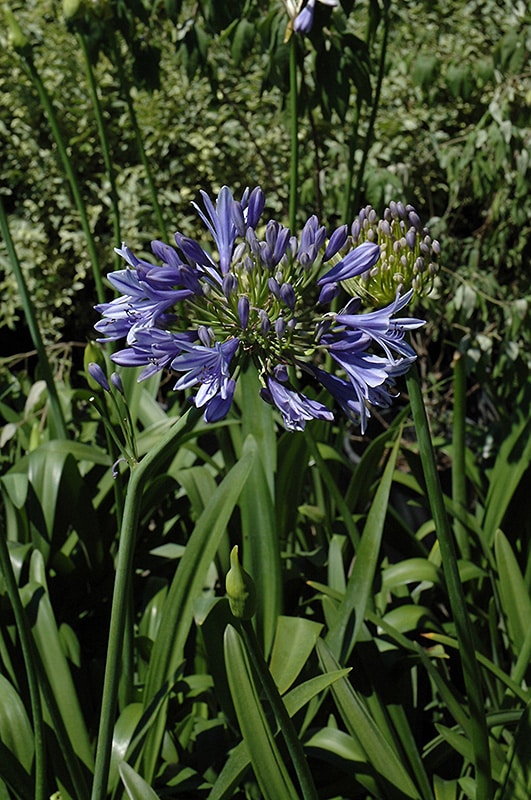Unleashing the Secret to Effective Agapanthus Cultivation: Advice for a Flourishing Garden
In the world of gardening, cultivating agapanthus effectively needs a critical method that includes numerous elements of plant treatment. By recognizing the nuances of agapanthus growing, one can create an atmosphere where these plants grow and bloom perfectly.
Planting Agapanthus: Finest Practices
When growing Agapanthus, proper soil preparation is crucial for making sure successful growth and growth of these attractive flowers. Agapanthus, typically recognized as Lily of the Nile or African lily, thrives in well-draining soil with a somewhat acidic to neutral pH degree - Agapanthus. Before growing, it is essential to change heavy clay dirts with raw material such as garden compost or peat moss to improve water drainage and give vital nutrients for the plants
To grow Agapanthus, pick an area that gets full sunshine to partial shade, as this will certainly advertise healthy and balanced growth and plentiful blooming. Dig a hole two times the size of the plant's root round and position the Agapanthus at the same deepness it was previously growing. Carefully backfill the opening with soil, pushing down firmly to remove any air pockets around the roots.
Water the newly grown Agapanthus extensively and proceed to keep the soil uniformly wet, specifically during the plant's active growing period. Agapanthus. Applying a well balanced fertilizer once a month can better support the plant's growth and blooming. By adhering to these ideal techniques for planting Agapanthus, you can develop a spectacular display of these exciting blossoms in your garden
Perfect Soil Conditions for Agapanthus
For optimum growth and blooming success of Agapanthus plants, guaranteeing the soil conditions are ideal is essential. Agapanthus prospers in well-draining dirt with a slightly acidic to neutral pH level ranging from 6.0 to 7.0. This type of soil permits ample water drainage, avoiding waterlogging which can lead to root rot. To improve dirt drainage, think about adding organic issue such as compost or peat moss when preparing the planting website. Additionally, Agapanthus chooses dirt that is abundant in nutrients, so including a balanced fertilizer throughout the growing season can advertise healthy development and lively flowers.

Watering and Feeding Tips
To make sure healthy and balanced growth and vivid flowers, proper watering and fertilizing strategies are necessary for effective Agapanthus cultivation. Agapanthus plants profit from routine watering, particularly during the expanding season.
When it involves feeding Agapanthus, a well balanced fertilizer with equal components nitrogen, phosphorus, and potassium can be used in the springtime to advertise healthy and balanced growth and blooming. Slow-release fertilizers are suitable for giving nutrients slowly over an extensive duration. Avoid over-fertilizing, as this can result in excessive foliage growth at the expenditure of blooms.
In addition, incorporating organic matter like compost right into the dirt can enhance nutrient degrees and improve soil framework, aiding in the general health of the Agapanthus plants. By adhering to these watering and fertilizing tips, garden enthusiasts can guarantee their Agapanthus plants flourish and generate spectacular displays of blossoms.
Pruning and Deadheading Methods
Proper trimming and deadheading techniques play a vital role in preserving the wellness and aesthetic appeals of Agapanthus plants, enhancing the important methods of watering and fertilizing for effective growing. Trimming Agapanthus involves eliminating invested flower heads, dead or yellowing leaves, and general shaping of the plant to advertise better development. Deadheading, the process of removing faded blossoms, not just enhances the plant's appearance however likewise urges more blooming.
When deadheading Agapanthus, it is recommended to clip off the flower stem at the base utilizing sharp, clean shears. This procedure reroutes the plant's energy from seed production back into root and foliage growth, advertising a much healthier and much more robust plant. Home Page Normal deadheading can extend the growing period of Agapanthus and avoid self-seeding, which can cause congestion.
In terms of pruning, Agapanthus usually gain from a light trim after flowering to clean up the plant and urge fresh development. Cutting back the spent flower stems and eliminating any kind of damaged or dead foliage helps preserve the plant's vitality and total look. Nonetheless, it is important to prevent reducing right into the crown of the plant, as this can damage its wellness.

Protecting Agapanthus From Pests and Diseases
Executing efficient bug and condition monitoring techniques is crucial to guarding the wellness and vitality of Agapanthus plants in farming. Agapanthus are usually durable plants, however they can still drop sufferer to various bugs and illness otherwise appropriately cared for. One common bug that affects Agapanthus is the Agapanthus borer, a caterpillar that passages into the plant, creating damage to the blossoms and leaves. To protect against invasions, regular assessment of the plants is important. If borers are identified, they can be manually gotten rid of, or insecticidal soap can be utilized as a control step.
In enhancement to pests, Agapanthus are prone to conditions such as root rot and fungal fallen leave places. By remaining cautious and addressing insect and condition concerns promptly, gardeners can assist their Agapanthus grow and flourish.

Verdict
Finally, effective cultivation of agapanthus requires proper growing strategies, ideal soil conditions, adequate watering and fertilizing, normal trimming and deadheading, and defense from parasites and conditions. By adhering to these techniques and ideas, gardeners can guarantee a flourishing garden loaded with beautiful agapanthus blossoms. Agapanthus. Bear in mind to preserve constant care and attention to information to advertise the health Visit This Link and wellness and durability of these spectacular plants
When planting Agapanthus, correct dirt preparation is important for ensuring successful growth and advancement of these lovely blossoms.Water the recently grown Agapanthus thoroughly and proceed to maintain the soil equally moist, particularly throughout the plant's active expanding season.For optimal development and flowering success of Agapanthus plants, ensuring the dirt conditions are ideal is critical. When hair transplanting or planting Agapanthus, ensure the soil is well-prepared to provide the necessary foundation for the plants to develop themselves successfully. One usual insect that affects Agapanthus is the Agapanthus borer, a caterpillar that go tunnels into the plant, causing damage to the blossoms and leaves.